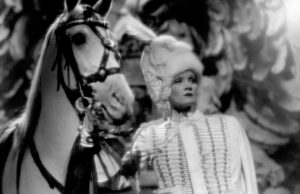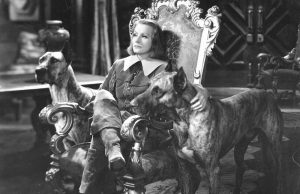If I Had a Million (1932)

Toronto Film Society presented If I Had a Million (1932) on Sunday, December 2, 1984 in a double bill with Bitter Sweet as part of the Season 37 Sunday Afternoon Film Buffs Series “A”, Programme 5.
Production Company: Paramount. Directors: Ernst Lubitsch, Norman Taurog, Stephen Roberts, Norman Z. McLeod, James Cruze, William Seiter, Bruce Humberstone. Scripts: Seventeen writers are credited, including Claude Binyon, Sidney Buchman, Lester Cole, Ernst Lubitsch, Joseph L. Mankiewicz and Seton I. Miller, adapted from the story, “The Windfall” by Robert D. Andrews.
Cast: Gary Cooper (Gallagher), Wynne Gibson (Violet), George Raft (Eddie Jackson), Charles Laughton (The Clerk), Richard Bennett (John Glidden), Jack Oakie (Mulligan), Frances Dee (Mary Wallace), Charlie Ruggles (Henry Peabody), Allison Skipworth (Emily), W.C. Fields (Rollo), Mary Boland (Mrs. Peabody), Roscoe Karns (O’Brien), May Robson (Mrs. Walker), Gene Raymond (John Wallace), Lucien Littlefield (Zeb), Joyce Compton (Marie).
The basic ingredients that went into the recipe for this film…seven directors, eighteen writers, fourteen noted stars and host of minor players…had all the potential for a head-on collision that would have made a 12 car pile-up on the Don Valley Parkway at rush hour seem like a minor accident. However, it all just happened to work, and in this case, too many cooks simply enhanced the broth.
The basic story is of John Glidden who is the one on-going character, who decides to give his fortune to strangers, rather than his his relatives squabble over it after he dies. The eight strangers make up the eight stories under this motion picture umbrella.
At the time (1932) Motion Picture Herald noted although the basic idea was nothing really new, the “Technique adapted by Paramount…is ample evidence that there really is something new under the Kleig lights in the way of imagination-capturing novelty.” Although there are different directors and stars in each segment, the continuity is never affected…it is almost impossible to tell where and when each director entered. The story, rather than becoming befuddled, flows well…and the emotions range from slap-stick comedy to tear-jerking melodrama.
Alexander Bakshy, writing in The Nation, had a word for the motion picture industry, “If the film can only succeed in convincing Hollywood that intelligence adds value to its productions, it will have performed an important service in raising American films from the mire of cheap sentiment and hokum.” Most agree the segment directed by Lubitsch is the funniest…and also the shortest.
There are some subtle, and not so subtle moments…including the segment which sees Wynne Gibson, as a lady of questionable reputation, finding herself with a million dollars, taking the best suite in the best hotel, then engaging in what (for her) is the greatest luxury…going to bed alone.

Although Gary Cooper usually receives top billing in the film, his segment, directed by Norman Z. McLeod, is one of the weakest. Charles Laughton’s bit as the fat, meek bookkeeper, directed by Lubitsch, is a high-light.
In a film with so many top stars and directors, there are bound to be many “behind the scenes” stories. One comes from Elsa Lanchester, in her auto-biography “Elsa Lanchester Herself.” The pairing of her and Laughton was not new. She recalls a sequence involving Laughton as a bank clerk, where he learns of his new-found wealth, and heads for what is obviously the office of the Bank President, greeting him with what she describes as “the largest raspberry the world has ever heard.” The finger accompanied the raspberry. In England, during that era, the raspberry was a “no-no” for the film censors, so another take was made for British consumption, where Laughton gives a shrill whistle, and the two-finger “up yours” gesture.
Notes by Bill Sturrup










Leave a Reply